On the vast land of China, there are countless magnificent and primitive natural wonders. Among them, the prairie has become a shining pearl of nature with its graceful scenery. It is not only a good place for leisure tourism, but also a valuable resource for natural ecological protection and research.
Here, people can feel the mystery and endless freedom and vitality of nature. This article will introduce you the 10 greatest prairies in China.
Table of Contents
- 1. Hulunbuir Grassland
- 2. Xilingol Grassland
- 3. Ili Grassland
- 4. Nagqu Alpine Grassland
- 5. Western Sichuan Alpine Grassland
- 6. Qilian Mountain Grassland
- 7. Ordos Grassland
- 8. Bayinbuluke Grassland
- 9. Wumeng Grassland
- 10. Ruoergai Grassland
1. Hulunbuir Grassland
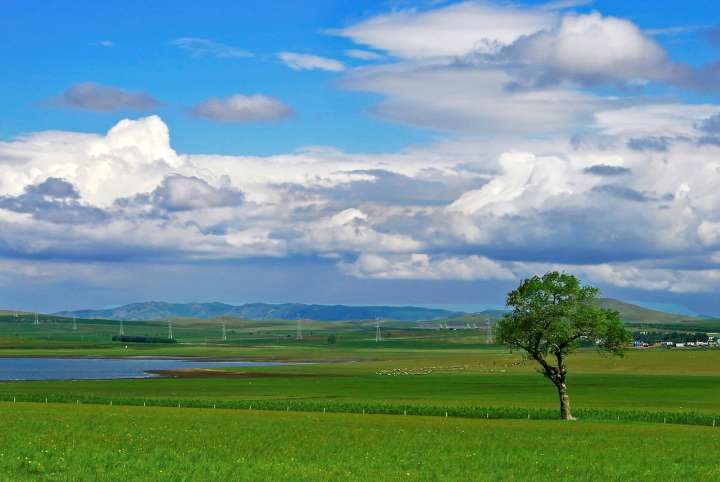
Hulunbuir Grassland is a world-renowned natural pasture and one of the four major grasslands in the world.
Location: Northeast Inner Mongolia Autonomous Region
Overview: The grassland is approximately 350 kilometers wide from east to west and 300 kilometers long from north to south, with a total area of approximately 113000 square kilometers. More than 3000 rivers cross the grassland, and over 500 lakes are scattered throughout.
Its terrain is high in the east and low in the west, with an altitude of 650-700 meters. It is regularly distributed from east to west and spans three zones: forest grassland, meadow grassland, and arid grassland.
Climate: The Hulunbuir Grassland is located in a semi-arid region and has a temperate continental climate. The winter here is cold and dry, while the summer is hot and rainy.
It has a large annual temperature difference and date temperature difference, with an average annual temperature of around 0 ℃, a frost-free period of 85-155 days, and an annual precipitation of around 250-350mm.
Plant: There are over 120 nutritious herbages, including alkali grass, needle grass, alfalfa, and ice grass, covering 1000 species of plant resources from 100 families and 450 genera.
Animal: There are over 480 species of wild animals on the Hulunbuir Grassland, such as black bears, red deer, and moose.
Among them, there are also many rare birds, the most famous of which are the black grouse, red-crowned crane, and swan.
Beautiful scenery: The Hulunbuir Grassland in Inner Mongolia is a place with beautiful and pleasant scenery, such as the endless greenness, rolling Great Xing’an Mountains, beautiful and rich Hulun Lake and Beier Lake, which are praised as the jasper of the North, heaven on earth and a world-famous tourist resort.
Read More: 10 Best Places You Must Visit in Inner Mongolia
2. Xilingol Grassland
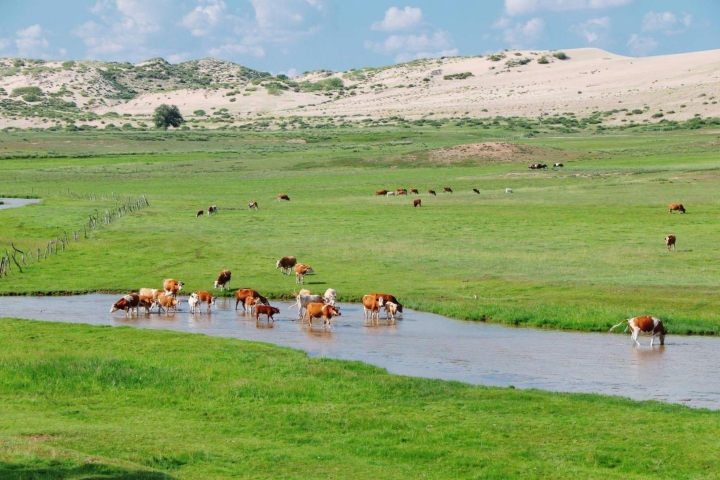
Xilingol Grassland is one of the four major grasslands in China and an important ecological barrier in the northern region of China.
Location: within the jurisdiction of Xilingol League in the eastern central part of Inner Mongolia Autonomous Region
Overview: The grassland area is 179600 square kilometers. The terrain tilts from southeast to northwest, with many low mountains and hills in the southeast and scattered basins.
The terrain in the northwest is flat, with some low mountains and hills and lava platforms scattering among them.
Climate: The area has a semi-arid and arid continental monsoon climate in the temperate zone, with a cold, windy, and arid climate.
The annual average temperature is 1℃ -2℃, and the frost-free period is 90 to 120 days.
The annual precipitation decreases from northwest to southeast, approximately within the range of 150 mm to 400 mm.
Plant: It is home to 74 families, 299 genera, 658 species of seed plants, 73 species of moss plants. Moreover, 46 species of large fungi have been found in the grassland. Among them, there are 426 medicinal plants and 116 excellent herbaceous species.
Animal: There are 33 species of mammals in the grassland, including yellow sheep, wolves, foxes, and 76 species of birds. Among them, there are 5 species of national first-level protected wild animals, including the red crowned crane, white stork, great bustard, and jade belt sea eagle.
There are 21 species of national second-level protected wild animals, including the swan, grassland eagle, and yellow sheep.
Beautiful scenery: theXilingol Grassland boasts beautiful natural scenery, ancient Mongolian customs, numerous cultural relics, and a pleasant summer climate, attracting numerous visitors.
3. Ili Grassland
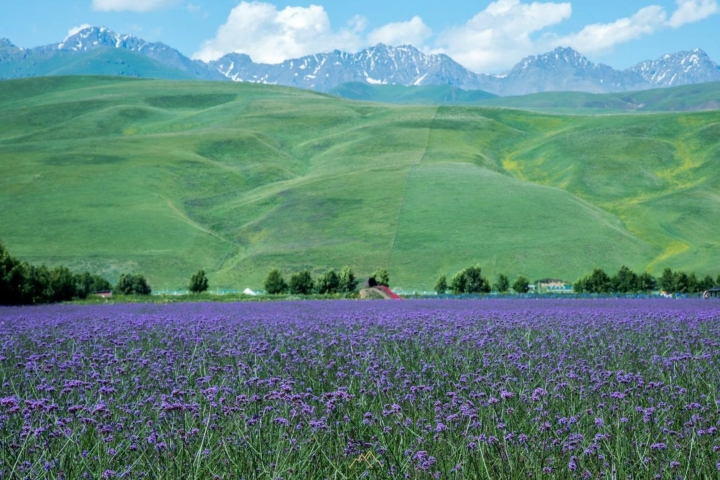
The Ili Grassland is one of the four major grasslands in China and is also rated as one of the six most beautiful grasslands in China.
Location: In the Ili River Valley north of the Tianshan Mountains in the western part of Xinjiang Uygur Autonomous Region
Overview: The Ili Grassland is composed of numerous grasslands such as Nalati, Karajun, Kurdening, Bayinbuluke, Tangbula, and Gongnaisi.
The grassland is sequentially distributed from high to low with alpine meadows, mountain meadows, mountain grasslands, mountain desert grasslands, plain deserts, and river valley meadows.
Climate: The Ili grassland belongs to the temperate continental climate, with a mild and humid climate.
The annual average temperature is 10.4 ℃, the annual extreme maximum temperature is 42.8 ℃, and the extreme minimum temperature is -51.0 ℃.
The average annual precipitation is 417.6 millimeters, and the annual sunshine hours are about 2870 hours.
Plant: there are lush mountain meadows of the slender stem iris formation, as well as other accompanying species like brown perilla, false gentian, moss, ice grass, fescue, strawberries, and thyme.
Animal: Apart from common grassland animals, there are also nationally-protected animals such as the Yili Grassland spotted cat, Yili pika, black qin chicken, and red duck.
Beautiful scenery: There are widely distributed grassland mound tombs, mysterious and colorful Ili rock paintings, and rugged and humorous grassland stone figures, It can be called the “three major cultural relics and wonders” on the Ili grassland and a precious treasure trove of cultural relics to understand the ancient ethnic groups of Ili.
4. Nagqu Alpine Grassland
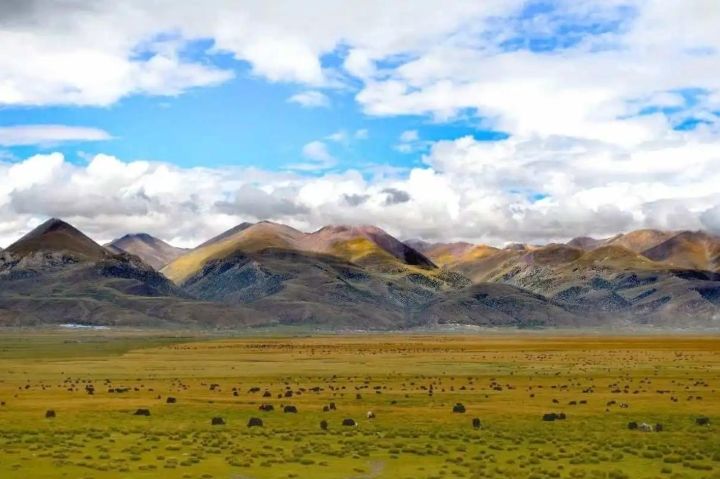
The Nagqu Alpine Grassland is one of the six most beautiful grasslands in China.
Location: Naqu City, Xizang Autonomous Region
Overview: The total size of the area is over 400000 square kilometers, with a terrain that is high in the west and low in the east, and an average elevation of over 4500 meters.
Climate: The grassland belongs to the semi-arid monsoon climate of the plateau sub cold zone, with low temperature, thin air, dry and clean atmosphere, strong solar radiation, and large daily temperature difference.
The annual average temperature is -1.5℃, with an average daily temperature difference of 16.1℃. The duration above 0 ° C is up to 164.5 days, and the annual sunshine hours are 2846.9 hours.
The period from mid-October to mid-May of the following year is the period of snow accumulation and soil freezing. The average annual frost day is 103 days.
The average annual precipitation is 421.9 millimeters, the average annual evaporation is 1690.7 millimeters, and the average relative humidity is 54%.
Plant: Thoreau grass and shamrock grass
Animal: There are national first-class protected animals unique to the plateau, such as wild yaks, Tibetan antelopes, Tibetan wild donkeys, Tibetan snow leopards, and black necked cranes.
Beautiful scenery: The terrain here is flat, with lakes of all sizes scattered everywhere, and geothermal hot springs covered in clouds and mist all year round.
5. Western Sichuan Alpine Grassland

The Western Sichuan Alpine Grassland is a traditional grassland pastoral area in China, rated by National Geographic of China as one of the six most beautiful grasslands in China.
Location: Central Ganzi Prefecture, Sichuan
Overview: It is centered around Litang, Ganzi, Xinlong, Baiyu, and Batang grasslands, with a core area of 70000 square kilometers and an elevation of 3800-4500 meters.
The topography of the mountain plain and hilly plateau is well developed, flat and broad. The sunny slope and mountain plain are magnificent subalpine meadows and alpine meadows.
Climate: It is cold and dry with windy winters and humid summers due to the influence of westerly airflow. The annual precipitation ranges from 100mm to 300mm.
Animal: There are abundant wildlife resources here, such as antelopes, green sheep, red-crowned cranes and otters.
Plant: The Western Sichuan Alpine Grassland are rich in precious medicinal herbs such as Cordyceps sinensis and Fritillaria.
Beautiful scenery: From a bird’s-eye view, Western Sichuan Alpine Grassland is like a green ocean. In addition, there are world-renowned Kangding love songs and colorful and jumping Guozhuang dances here, making people linger and forget to leave.
6. Qilian Mountain Grassland
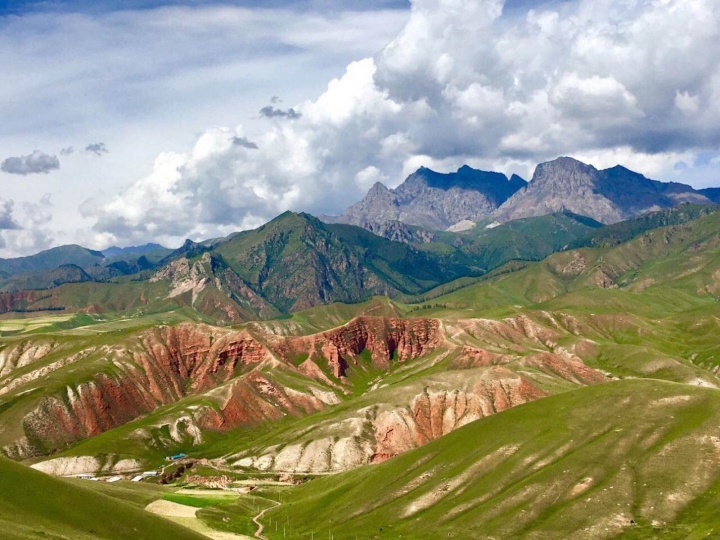
The Qilian Mountain grassland is one of the largest alpine grasslands in northwest China and has been rated as one of the six most beautiful grasslands in China.
Location: Within Qilian County, Haibei Tibetan Autonomous Prefecture, Qinghai Province
Overview: The altitude of the Qilian Mountain grassland is above 3000 meters. Among them, the most eye-catching is the Damaying Grassland, located in the basin between Yanzhi Mountain and Qilian Mountain, with an area of 25000 square kilometers.
Climate: It has a typical alpine grassland climate, cold and dry, with an average annual temperature of only around -2 ℃.
Animal: There are a large number of wild animals distributed on the grassland, such as Tibetan antelopes, wild donkeys, wolves, foxes, and snow leopards.
Plant: The vegetation of the Qilian Mountain grassland mainly includes alpine meadows, alpine shrubs, and alpine forests. There are a large number of alpine plantss, such as alpine azaleas, alpine morning glory, and alpine Artemisia annua.
Beautiful scenery: The best tourist season for the Qilian Mountain grassland is between July and August each year. At this time, the Qilian Mountains are covered in silver, while the grasslands are covered with vast expanses of blue water, dotted with horses, cows, and sheep, forming a magnificent painting.
7. Ordos Grassland
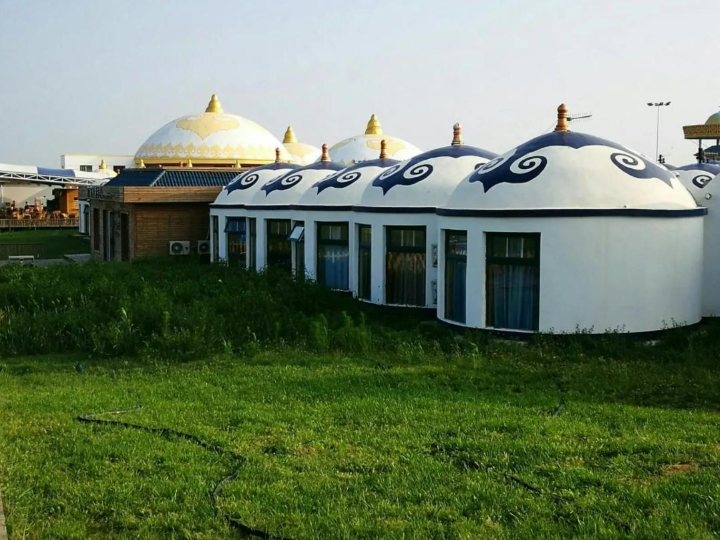
The Ordos Grassland is a national 4A level tourist attraction.
Location: Within the territory of Hangjin Banner, Ordos City
Overview: Covering an area of approximately 300000 acres
Climate: The Ordos Grassland belongs to a temperate continental climate, with hot summers and cold winters.
Animal: There are over 80 species of birds, including the seagull, the Oriental white stork, and the white swan.
Beautiful scenery: The tourist spots of Ordos Grassland include watching Ordos weddings, watching real-life equestrian dramas, riding horses, archery, sacrificing oboes, visiting herdsmen, and experiencing the primitive depths, simple natural scenery, and local customs of the grassland.
8. Bayinbuluke Grassland

The Bayinbuluke Grassland, formerly known as the Yuledus Grassland, Zhuledus Grassland, and Yuludus Grassland, is the second largest grassland in China.
Location: Baynbruck District, northwest of Hejing County, Bayingolin Mongolian Autonomous Prefecture, Xinjiang Uygur Autonomous Region
Overview: The Bayinbuluke Grassland has a flat terrain and abundant water and grass, making it a typical grass meadow grassland.
It is composed of two high mountain basins, the Great and the Little Zhuletus, and mountainous hilly grasslands. The grassland is 270 kilometers long from east to west and 136 kilometers wide from north to south, with a total area of 23835 square kilometers.
Among them, the available grassland area is 20519 square kilometers, with an average elevation between 1500 to 2500 meters.
Climate: The Bayinbuluke Grassland has a temperate continental arid climate, with brief and cool summers, long and cold winters, and extremely short frost-free periods.
The annual average temperature is -4.6℃, with extreme high temperatures of 28.3℃ and extreme low temperatures of -48.1℃.
The average annual precipitation is 276mm, with rainfall concentrated from June to August, accounting for 50% to 70% of the year.
The snowfall is concentrated from January to March, with an average annual snowfall of 70.5mm. The annual evaporation is 1128mm, with an average relative humidity of 69%.
Animal: There are 145 species of vertebrates in the grassland, including 5 species in 2 families of fish, 2 species in 2 families of amphibians, 119 species in 31 families of birds, 19 species in 10 families of mammals, and various invertebrates.
Plant: There are a total of 704 species of wild vascular plants in 254 genera and 62 families in the Bayinbuluke Grassland.
Among them, there are three rare and endangered species, namely Sagittarius, Broad-leaved Red Gate Orchid, and Shaded Red Gate Orchid.
Furthermore, there are 19 unique plants in Xinjiang, including the Renchang Iron Horn Fern, Tianshan Cuique Flower, Tianshan Ligularia, and multi flowered Poa pratensis.
Beautiful scenery: The Bayinbuluke Grassland not only has beautiful scenery, but also offers various recreational activities, such as grassland camping, grassland horseback riding, grassland off-road, and grassland photography.
9. Wumeng Grassland
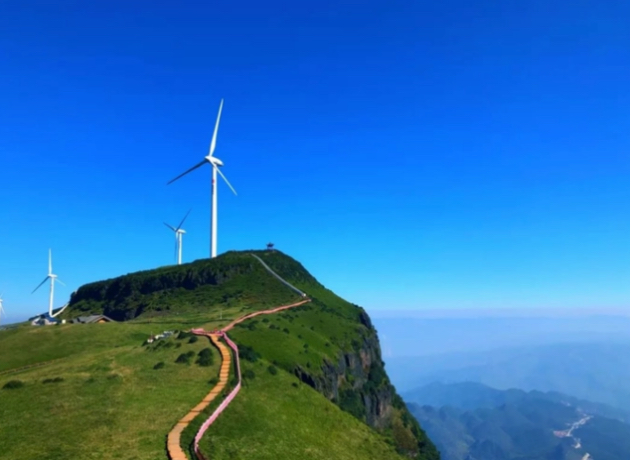
The Wumeng Grassland is a national 4A level tourist attraction with the highest altitude and largest size in Guizhou.
Location: Wumeng Town and Pingdi Yi Ethnic Township, Panzhou City, Liupanshui City, Guizhou Province
Overview: The Wumeng Grassland covers an area of 178 square kilometers, with an elevation of 2000 to 2857 meters and an average elevation of 2500 meters. The difference between the highest and lowest points is over 2100 meters.
Climate: This grassland belongs to the subtropical monsoon climate, with an average annual temperature of 11.1℃. The annual precipitation is mostly between 800 and 1600 millimeters, and the second half of the year usually accounts for 70% of the annual precipitation.
Animal: There are animals such as cows, sheep, horses, camels, wolves, foxes, and minks in the grassland.
Plant: In addition to common grassland plants, there is also a unique species of rhododendron on the Wumeng Grassland – the alpine dwarf rhododendron.
Beautiful scenery: There is an endless range of alpine grasslands, a ten-thousand-acre plateau low azalea forest, a high mountain lake called “Changhaizi”, a Yi ethnic settlement, a unique natural phenomenon called “Buddha Light”, magnificent cowshed Liangzi Mountain, and Badanzi Mountain.
10. Ruoergai Grassland

The Ruoergai Grassland is the largest grassland in Sichuan Province. The largest peat swamp in China in this grassland, the Ruoergai Marsh is the world’s largest “plateau solid reservoir”.
Location: Ruoergai County, Aba Tibetan and Qiang Autonomous Prefecture, Sichuan Province
Overview: The Ruoergai grassland is composed of meadow grassland and swamp. The territory has high mountains and deep valleys, steep terrain, and an altitude of 2400-4200 meters, making it a typical hilly plateau. The main rivers in the grassland include Bailong River and Baozuo River.
Climate: The Ruoergai Grassland has a continental plateau cold temperate monsoon climate, with cold winters and cool summers, abundant sunlight, and a large temperature difference between day and night.
The wind direction is mostly northwest, with winds reaching 11 levels. Ice begins in late September and completely thaws in mid-May.
Animal: The grassland is home to a large number of wild animals such as black necked cranes, white swans, Tibetan mandarin ducks, white cranes, sika deer, and red pandas.
It is home to 148 species of birds, 39 species of mammals, 15 species of fish, 3 species of amphibians, and 3 species of reptiles.
Plant: The Ruoergai grassland is rich in wood resources, including fir, spruce and other tree species. Economic crops include rapeseed and flax, apples and pepper.
The edge of its swamp is also rich in precious herbs such as Linxiang, Cordyceps, Fritillaria, Deer Antler, and Snow Lotus.
Mineral resources: There are over 30 types mineral resources on the Ruoergai grassland, including peat, coal, iron, copper, uranium, manganese, and gold. The peat resources in swamps are also extremely abundant, with a distribution area of over 2000 square kilometers and reserves of nearly 4 billion cubic meters.
Beautiful scenery: Here, you can enjoy the grand grassland sunrise and sunset, and feel the beautiful scenery of a sea of clouds, green grass, and small rivers.
Moreover, you can also experience Tibetan folk culture, such as drinking butter tea, eating tsamba, trying Tibetan dance, and outdoor activities such as horse riding, photography, camping, and grassland football.
The above are the ten major grasslands in China, which not only present us with the miraculous craftsmanship of nature, but also witness the development of the Chinese civilization.
However, as time goes by, these grasslands face more challenges. It is suggested that we should protect these precious oases and let the mysterious and beautiful land forever bloom with vitality, leaving endless surprises for future generations.
